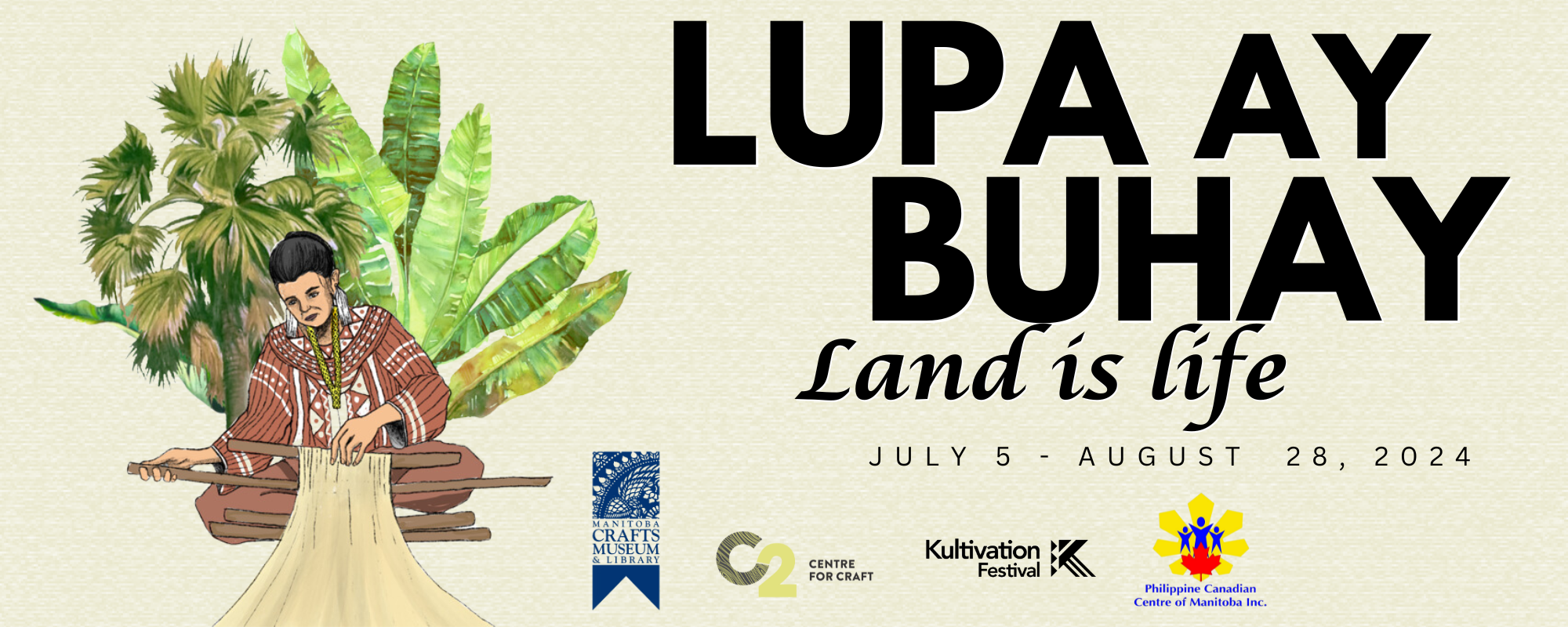Lupa ay Buhay | Land is Life is an exhibition showcasing Filipino culture through its rich craft traditions across the archipelago, including textile weaving and beaded jewelry from the Igorot of Northern Luzon and the Lumad of Mindanao, delicately embroidered Barong (men’s traditional shirt) and Baro’t Saya (women’s traditional clothing), woven Salakot (hat), and many more.
Land is central to our material culture and heritage. We borrow the phrase Lupa ay Buhay from Indigenous peoples and farmers movements in the Philippines to deliver the message that land is life and it is sacred. Therefore, it must be protected. A Philippine Indigenous women’s organization called Teduray Lambangian Women’s Organization puts it simply:
“Sapagkat ang lupa ay buhay, ito ay itinuturing naming sagrado. At sa unti-unti nitong pagkasira ay unti-unti din kaming namamatay.”
“Because land is life, we treat it as sacred. And its gradual destruction is also our gradual death.”
The raw materials used in traditional Filipino craft, like many other Indigenous craft practices around the world, are taken and grown from the land. Filipino farmers grow abaca (banana leaves) and piña (pineapple) which are two major fibers used in Philippine textiles. Indigenous peoples use materials readily available in nature to produce craft.
In a time where almost everything is commodified these craft traditions become difficult to sustain, especially in the face of environmental calamities and the lack of socio-economic support for Indigenous peoples, farmers and artisans in the Philippines. Craft making not only is a way of life that is passed down from generation to generation, but it is now also a source of livelihood for communities to survive.
Lupa ay Buhay | Land is Life shows the colorful tapestry of culture and diversity of the land in which Filipinos in the diaspora call home. It shows the ingenuity and creativity of our people. It is our hope that through this exhibit, people are able to connect to the land where the works here originate.
Curated by Ana Ilagan
This exhibit was made possible through the generous support of the Arts, Culture and Sport Grant | Province of Manitoba.



